Soviet military experts in Spain
On July 18, 1936, Ceuta radio reported: "A cloudless sky is over all of Spain." This was a conditional signal for the beginning of the fascist rebellion against the government of the Spanish Republic. The pro-fascist-minded generals, led by Franco, intended to end the republic with one blow, but this plan was frustrated by the patriots. Determined city dwellers led by left-wing parties seized the arsenals, headquarters and barracks of the rebels in Madrid, Barcelona, Valencia, Asturias, as well as in the Basque Country and in many other areas, suppressing the rebellion in most of Spain. Then the Italian and German fascists came to the aid of the rebels. Moroccan troops and the Foreign Legion, the newest, were urgently deployed to Spain Tanks, planes and guns. Having received reinforcements, the Francoists launched widespread offensive actions against the Republicans simultaneously from the north and south, with the main goal of the capture of Madrid, with the fall of which they associated with the overthrow of the republican system. The civil war escalated into a war of the patriotic and leftist forces of Spain against European fascism.
Small, poorly trained and weakly armed detachments of ordinary workers and peasants, under the command of elected, inexperienced commanders, were forced to fight against the predominantly professional forces of rebels and interventionists. Bearing heavy losses from aviation and enemy tanks, Republicans were forced to retreat.
Under these conditions, the most important and intractable problem for the Republican government of the Popular Front formed at the beginning of September 1936 under the leadership of the socialist Largo Caballero was the organization of the regular army. The leaders of the anarchists and some other parties that were part of the Popular Front believed that the republic did not need a regular army, that it could well be defended by militia units operating by guerrilla methods. They denied the need for a unified command, staffs, strict military discipline, stubbornly opposed any attempt to organize and centralize the leadership of military operations and the construction of fortifications on the approaches to the capital.
September 21, despite stubborn resistance, police forces under pressure from the numerically superior cadre troops of the rebels and interventionists were forced to leave Makeda, and September 27 - Toledo, located in 70 km from Madrid. Caught in the difficult conditions of the struggle against the invaders and the armed pro-fascist forces, the republican government tried to acquire weapon from neighboring France, as well as from England and the United States, but was refused. Then the government of Largo Caballero appealed for help to the leadership of the Soviet Union, with which Spain at that time did not have normal diplomatic relations.
In response to the request, Consul General of the USSR V.A. arrived in Barcelona. Antonov-Ovseenko, and a little later Ambassador MI began work in Madrid. Rosenberg, military attache brigade commander V.Ye. Gorev, naval attache captain 1 NG rank Kuznetsov, aviation attache Colonel B.F. Sveshnikov. Then corps commissioner Y.K. arrived in Madrid. Berzin is the chief military adviser to the republican government, and with it a group of combined-arms, artillery, aviation, and other volunteer specialists.
The Soviet specialists were faced with the task: as soon as possible to sort out the situation at the front and by active actions to help the republican command to establish effective command and control of the troops, to strengthen the Madrid sector of the front, to create a regular army from the detached troops and convoys.
At the suggestion of the chief military adviser to the divisional commander K.A. Meretskov, who possessed a great military experience and abilities of the troop organizer, was appointed adviser to the chief of the general staff and, together with the Spanish comrades, engaged in the formation of reserve units of the republican army.
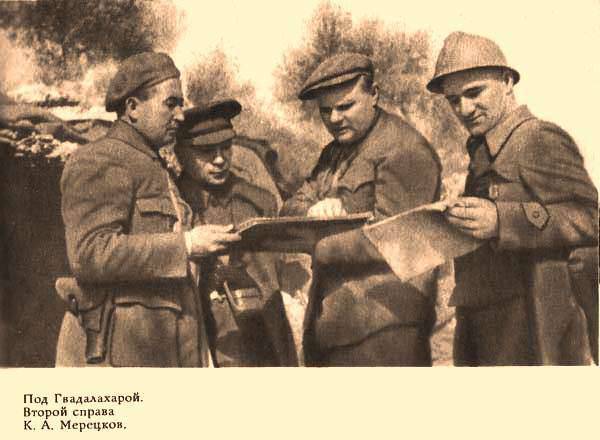
It should be said that in Spain, military ministers were usually not generals, but politicians, so in fact the commander in chief of the armed forces was the chief of the general staff. He personally developed the most important operational plans and reported them to the Council of Ministers. The leading staff of the General Staff, and indeed the entire central military apparatus, was staffed by officers of the old army. Among them were quite a few loyal people to the republic, but there were also indifferent and sometimes hidden supporters of Franco. The presence of the fascist agents in the General Staff and the Ministry of War, indiscipline and bureaucracy hampered the construction of a new army. To this we must add that the republican army did not have any prepared combined-arms headquarters, as a result of which the interaction of the troops on the battlefield was poorly organized.
In early October, having received a significant number of tanks, aircraft and artillery, the Franco launched an offensive. Breaking through the weakly fortified positions of the Republicans, they approached Madrid on October 18. The republican command was lost and did not take the necessary measures to organize an organized resistance to the enemy. The commander of the Central Front, General Asencio, said at a government meeting that the quantity and quality of the enemy’s equipment made the continuation of the struggle meaningless, and he disclaims responsibility for the defense of Madrid.
Then the defense of the capital was practically taken over by the Soviet specialists Ya.K. Berzin, V.E. Gorev, K.A. Meretskov, X.U. Mamsurov, N.N. Voronov, B.F. Sveshnikov, although officially led by the Spanish Communists, led by José Diaz and Dolores Ibarruri. Measures were taken to turn the capital into an impregnable fortress. A plan was drawn up for defensive installations in the city and their urgent construction was organized.
After a thorough acquaintance with the situation at the front and in the rear, V.E. Gorev, K.A. Meretskov, B.M. Simonov and our other military specialists on behalf of the republican command, together with the Spanish comrades-in-arms, developed a plan for the main activities for organizing the new People’s Army. The chief military adviser reported to his republican government. Approved by the Minister of War, this plan was sent to the troops and rear services for execution.
"The war is entering a critical phase, it was noted in this document, the rebels achieved superiority on the Central Front and seized the initiative ... The main defense issues are reduced to the organization of the existing army, the creation and preparation of reserves, the training of command personnel, the organization of guerrilla actions in the Frankish rear , organization of intelligence and counterintelligence. The main current task is to mobilize all means for organizing the military industry and strengthening the defense of Madrid. ” Further, specific tasks were outlined for training, command and control, organization of the army, training of commanders, strengthening the political consciousness of the fighters, manufacturing weapons and ammunition, strengthening the Central Front, and especially the defense of Madrid.
In October, the General Military Commissariat was established 1936, the divisional commissar I.N. Nesterenko. Military commissariats were formed in the fronts, formations, units, military schools, various institutions.
In the city of Albacete - the center of the formation of new troops, work began on the formation of the first Spanish as well as international brigades. Contrary to the opposition of a number of senior officers, the first brigade, staffed by units of the 5 Communist Regiment under the command of E. Lister, arrived at the front and on October 29 received baptism at Sesenia. Soon five more infantry brigades were created and brought into battle. With the active participation of Luigi Longo, Franz Dalem and many other leaders of the left forces, as well as Soviet volunteers, 11, 12, 13-I and other international brigades and units of the People’s Army were quickly formed, later actively participating in repelling the fierce attacks of fascists to Madrid.
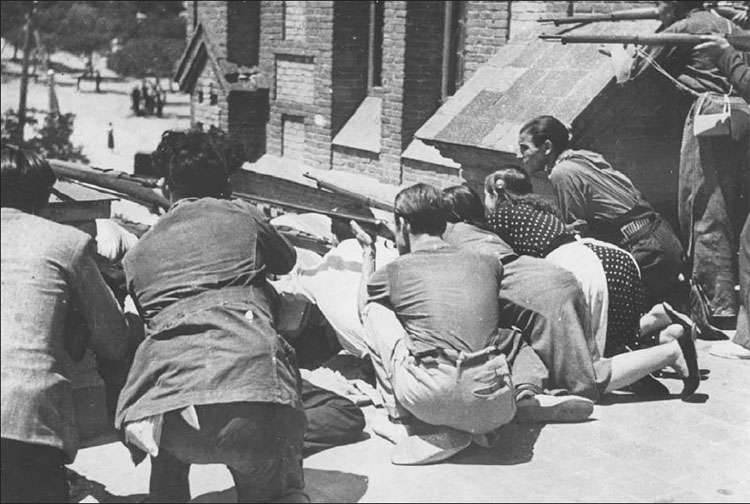
In October, the first transports with Soviet aircraft, tanks, weapons and ammunition entered the Spanish ports. Soviet volunteers, tankmen and pilots, also arrived at them. It was assumed that our commanders, driver mechanics and pilots would play the role of instructors in Spanish training camps. However, the extremely difficult situation that developed during this period on the Madrid sector of the Central Front forced the republican command to quickly form from Soviet specialists and new recruit cadets a marching tank unit commanded by Captain Paul Armand and throw it into battle against the rebel troops rushing to Madrid. interventionists. This made it possible to stop the enemy and win the precious time required for the approach of the reserve. The Soviet pilots found themselves in about the same position.
In November, another large group of our pilots and tankmen with military equipment and weapons (T-26 tanks and I-15 fighters) arrived in Spain. At this time, the rebels ’troops pushed the Republicans back, came close to the capital and started fighting on its outskirts. Together with the Republican brigades that had not yet completed the formation, a tank brigade of General de Pablo (brigade commander DG Pavlov) and a squadron of General Douglas (brigade commander JV Smushkevich), the backbone of which were Soviet volunteers, were thrown to the defense of Madrid. Together with the soldiers and commanders of the People’s Army and the soldiers of the international brigades, the Soviet tank crews and pilots were able to defend the capital of the republic.
The defenders of Madrid repelled four major offensive francoists. In the famous battle of Guadalajara, the People’s Army utterly routed the Italian expeditionary force. The fact that Madrid survived the great merit of the soldiers of the brigades of the People’s Army, international brigades, especially our tank crews and pilots, among which are the names of Mikhail Petrov, Paul Arman, Pavel Tsaplin, Kuzma Osadchy, Vasily Novikov, Pavel Rychagov, Sergey Denisov, Victor Holzunov, Ivan Lakeev and many others who later became Heroes of the Soviet Union. Noting the contribution of Soviet volunteers to the formation of the republican army, the American historian D. Kettel wrote: “Before the arrival of the Russian army headquarters, there were only armed masses without organization, without coordination of actions and plans. Shortly after the Russians arrived, there was a radical change in the entire defense system. For six months, the army was created, which managed to defeat the modern Italian army near Guadalajara and, for almost three years, to restrain the advance of the army of Franco, trained by the Germans and Italians and reinforced by the Mussolini divisions.
After the Guadalajara defeat, Hitler and Mussolini dramatically increased the supply of military equipment by Franco. New intervention units are also being sent to Spain. In order to thwart a major enemy offensive against Madrid, the Republican Army 15 December 1937 of the year launched an operation to liberate the fortress city located in the mountains, Teruel. As a result of the decisive onslaught of the infantry and tankmen, the defense of the Francoists was broken, Teruel was surrounded and, despite the stubborn resistance of the fascists, December 24 was occupied by Republicans.
Soviet tank crews acted on the most threatened sectors of the fronts. The companies of the BT-5 tanks bravely counterattacked the enemy, striking his infantry, artillery and tanks with machine-gun fire. The lack of technology forced the republican command to transfer tanks and aircraft from one sector of the front to another. There were days when tankers of one company participated in five to seven attacks, spending up to six ammunition. And those few airplanes that the people's air forces had had, were continuously in the air.
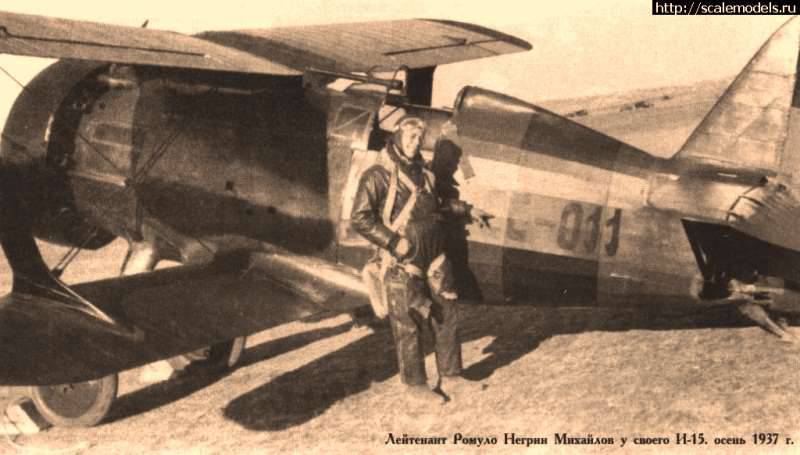
A great deal of work on the formation and training of republican troops was carried out by advisers to the commanders of fronts, the Navy, armies and formations of M.S. Shumilov, R.Ya. Malinovsky, E.S. Ptukhin, P.L. Romanenko, N.G. Kuznetsov, N.I. Biryukov, A.P. Fomin, N.N. Nagorny and others.
The Soviet Union rendered the Spanish People’s Army a great help with military equipment, weapons and equipment. According to official data, our country delivered Republican Spain more than 800 military aircraft, 362 machine gun cannon tanks, 100 armored vehicles, more 1550 artillery guns and 15000 machine guns, 500000 rifles, as well as a lot of ammunition and other military equipment, medicines and food.
About three hundred Soviet military engineers and technicians who arrived in Spain included highly skilled specialists in the maintenance and repair of aircraft, tanks, artillery and engineering weapons, communications equipment, and technical advisers for the industrial production of military equipment and ammunition. They prepared republican planes and tanks for battle, taught the Spaniards to fight on the Soviet technology, established the production and repair of aircraft, armored vehicles, weapons.
Already in October and November, the republican command and Soviet military experts urgently faced the task of quickly restoring equipment and weapons damaged in battles, and organizing training centers for accelerated training of tank, artillery and rifle and aviation specialists. This turned out to be far from easy, since Spanish heavy industry was poorly developed. In addition, the Spanish army was equipped with a small number of obsolete French tanks, airplanes of various types and variegated artillery and had neither field repair and evacuation equipment, nor other technical means capable of ensuring the rapid elimination of combat damage. Soviet specialists were able to organize current, and even average repairs in the field, on unsuitable airfields, using vans with trailers equipped with primitive equipment. There were not enough spare parts, and the repairmen under enemy fire dismantled tanks that had burned down on the battlefield in order to remove suitable parts and components from them. Each combat vehicle was worth its weight in gold, and the same tanks and aircraft were repaired dozens of times. Recovering patched and rolled machines cost much toil. But repairmen returned them to service.
Engineers and technicians showed a lot of resourcefulness in order to create repair and evacuation units from the Madrid, Barcelona and Valencia workers, as well as to organize a technical support service for the young republican army. Despite the difficult working conditions, Soviet and Spanish engineers improved the methods of assembling, maintaining and repairing combat vehicles and weapons. Another important task was solved - an enterprise was created to supply field repair bases with spare units and parts and to restore heavily damaged machines in factory conditions. In 30 km from Madrid, in the city of Alcala de Henares, with the active participation of engineers Peter Glukhov, Bulgarian Polina Nedyalkova and technicians Ivan Bacheshkin, Dmitry Reshettsov, Alexander Kostikova, the Spanish workers in the shortest possible time created a well-equipped Central with various production and testing equipment tank repair base, which soon became the head tank repair enterprise of the republic.
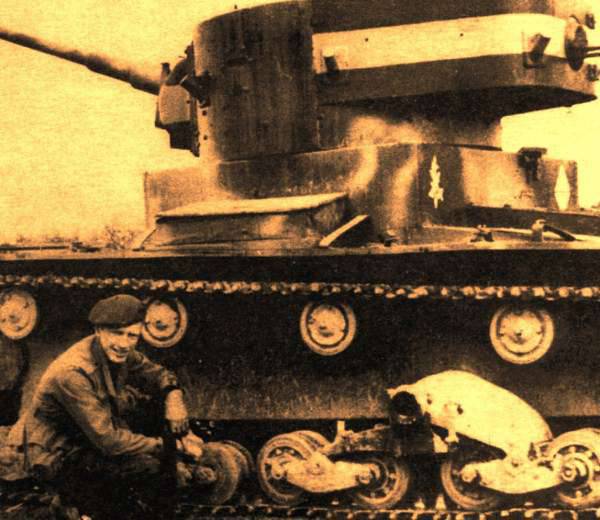
On this base, they overhauled the T-26 and BT-5 tanks, their engines and all other tank units and instruments, as well as communications, optics and weapons, restored and manufactured a variety of parts for tanks. Memos, instructions and posters on combat use, maintenance and field repair of Soviet equipment and weapons were also developed here. A repair of rifle and artillery weapons was organized at the Barcelona Machine-Building Plant in the Kartagena, Albacetian, Valencia and Madrid arsenals and workshops.
The brutal blockade by the fascists of the Spanish Republican coast and the actual closure of the Franco-Spanish border led to the complete cessation of the delivery of weapons to the People’s Army. In these critical conditions, the Republican government had to urgently create its own military industry. The base for this was very scarce. Of the ten large military enterprises in the country, five were in the hands of the fascists. Most of the leading engineering and technical personnel ran to Franco or abroad.
The most effective assistance to the Republicans in the rapid establishment of industrial production of aircraft, armored vehicles, weapons and ammunition was again provided by Soviet specialists. They helped the workers of the Ispano-Suiza de autosmobiles, Elisaldo and Ford Motor Iberica factories in Barcelona set up an overhaul of the aircraft, as well as the production of spare parts for them. From the middle of 1937 onwards, these plants had already produced I-15 aircraft, and a little later, I-16 aircraft. Not far from Alicante, tunnels were dug in the mountains, where the plant for the repair and manufacture of I-16 aircraft was located. In the city of Reus, the production of I-15 fighters was arranged.
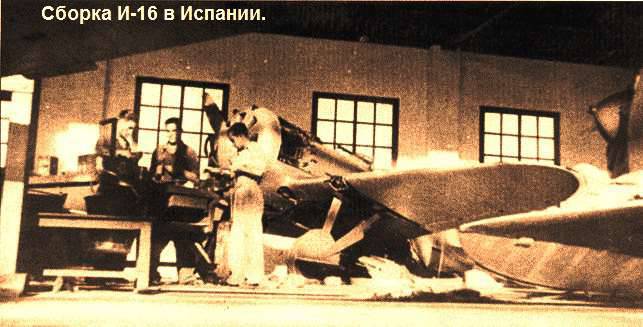
“One of our biggest concerns during the war,” writes the former commander of Republican Aviation Ignacio Hidalgo de Cisneros in his memoirs, “was organizing the production of new aircraft and repairing them. Thanks to the assistance provided to us by Soviet Russia, we were able to organize this matter. " In the middle of 1937, in the workshops of the Valencian shipyard "Union Naval de Levante" under the leadership of tank engineer Nikolai Alymov on the basis of the Soviet truck ZIS-5 in a short time armored machine with machine-gun armament was built, which became the main type of armored vehicle of the People's Army.
For the needs of the military industry at the metallurgical plant in the city of Sagunto, with the participation of the military engineer Andrian Vorobyov, the production of armor plates was mastered. Great help to the Spaniards in setting up the production of artillery and small arms and ammunition was provided by Soviet engineers and technicians Mikhail Parfenov, Nikolai Mikhailyuk, Semen Stotlitsky, Mikhail Zavrazhnev and many others. With the direct participation of engineers Ivan Markov and Andrei Kulikov, a large ammunition factory was established in Barcelona. Production of shells and cartridges was established in many small and large factories and in the workshops of a number of cities. However, the Popular Army continued to experience an acute shortage of small arms ammunition. Then the Soviet gunsmith engineers proposed to re-use the spent cartridges, as was done in our country during the civil war. On their advice, the Spanish workers created front-line brigades and collection teams. At the factories of Madrid, Sabadell and Barcelona, re-crimping of liners was organized for further use in cartridge production.
We can not say about the Soviet instructors and military advisers, military engineers and technicians who actively participated in the accelerated training of young commanders for rifle, tank, artillery and machine-gun units of the young revolutionary army. Our tankers and pilots, who formed the backbone of the international tank and air units and units of the republican army, generously shared military knowledge and combat experience with their Spanish sister cities. With the help of Soviet translators, they were taught how to master advanced military equipment, how to use it correctly, and constantly maintain their combat readiness. With the assistance of Soviet volunteers, training centers, camps and schools were created, which gave the republic a large detachment of officers. Experienced Soviet military engineers helped the republican command to organize armored, aviation and artillery support services in the armed forces.
In those years, 772 Soviet pilots, 351 tank crews, 222 general advisers, 100 gunners, 77 military sailors, 339 other military specialists and 204 translator (2065 people) fought in those years.
Sources:
Platoshkin N. The Spanish Civil War. 1936-1939 M .: Olma-Press, 2005. C. 122-178.
Pritsker D. Podvig of the Spanish Republic 1936-1939. M .: Sotsekgiz, 1962. p. 198-202.
Pozharskaya S. Generalissimo Franco and his time // New and newest story. 1990. No. 6. C. 164-185.
Vetrov A. Soviet volunteers in the army of Republican Spain. // visage 1973, No. 3.C. 71-77.
Mikhaylenko V. New facts about Soviet military assistance in Spain. // Ural Bulletin of International Studies. 2006. No. 6. C. 18-46.
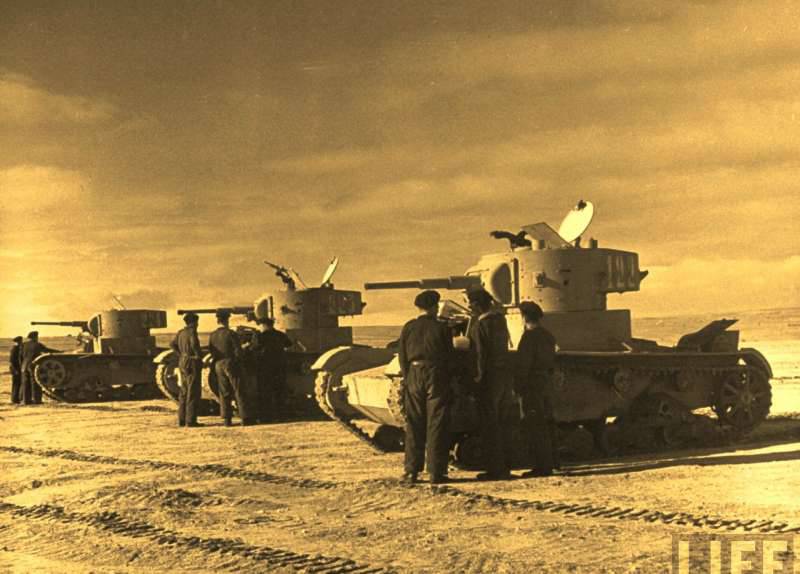
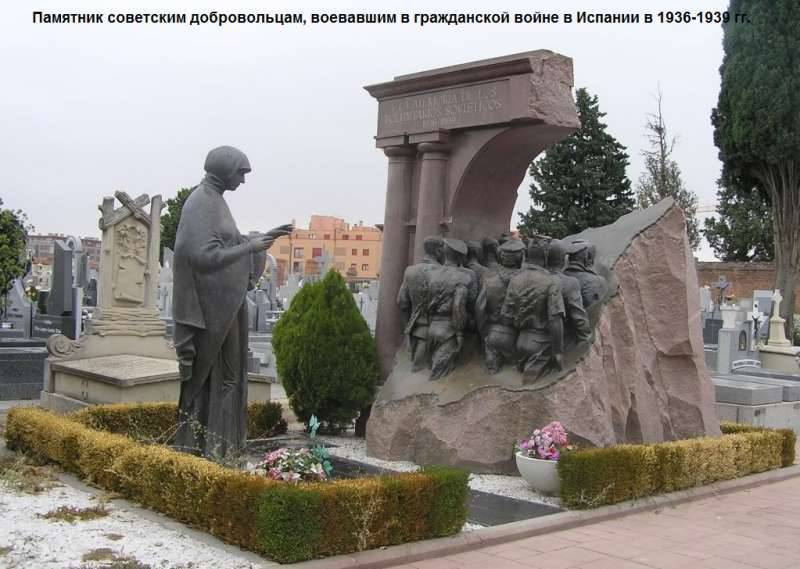
Information